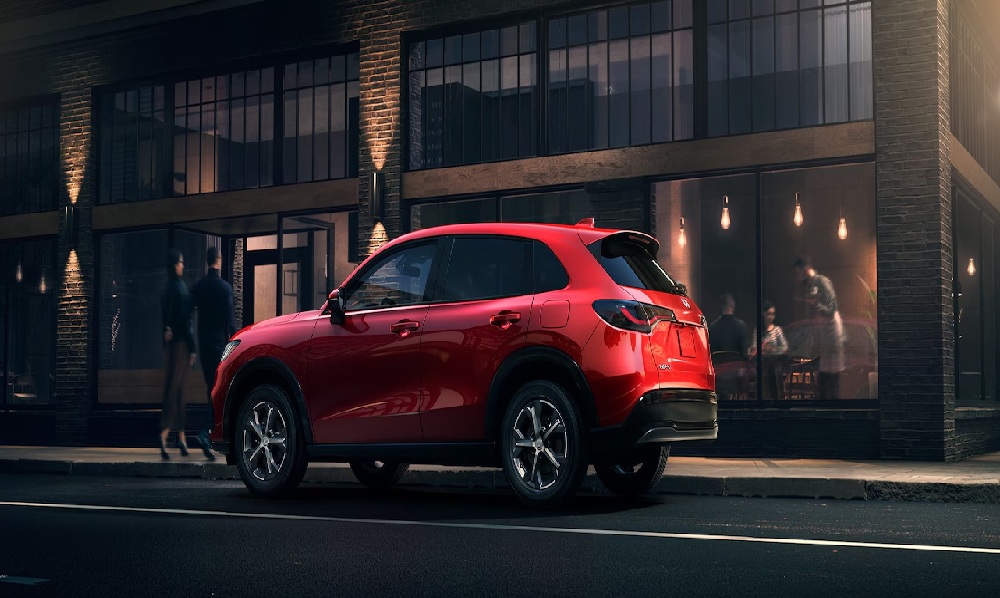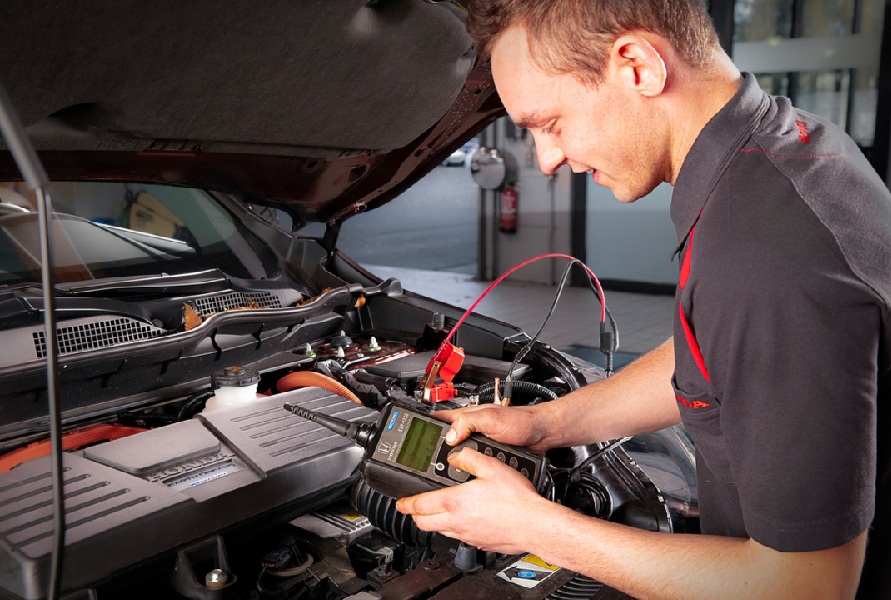The Honda HR-V hybrid, part of the Honda e:HEV (Hybrid Electric Vehicle) lineup, showcases the brand’s commitment to efficient and innovative automotive technology. One of the key features that contribute to its impressive fuel economy is the regenerative braking system.

Regenerative Braking
Before we dive into the specifics of the HR-V system, it’s essential to understand the basic concept of regenerative braking.
The Concept
Regenerative braking is an energy recovery mechanism that slows a moving vehicle by converting its kinetic energy into electricity. This electricity can be used immediately or stored until needed. In hybrid and electric vehicles, this energy is converted into electricity and stored in the battery.
Traditional Braking vs. Regenerative Braking
In traditional braking systems, kinetic energy is converted into heat through friction and ultimately dissipated into the environment. Regenerative braking, on the other hand, captures a significant portion of this energy and uses it effectively, improving the vehicle’s overall efficiency.
The Honda HR-V Hybrid Regenerative Braking System
The regenerative braking system in the Honda HR-V hybrid is an integral part of the innovative two-motor hybrid system known as i-MMD (Intelligent Multi-Mode Drive).
Components of the System
- Electric Motor: In the HR-V hybrid, the electric motor that propels the car also acts as a generator during braking.
- Power Control Unit (PCU): This is the “brain” of the hybrid system, controlling the flow of electricity between the motor, battery, and other electrical components.
- High-Voltage Battery: This stores the electrical energy recovered during regenerative braking.
- Brake System Control Unit: This coordinates between the regenerative braking and the traditional friction brakes.
- Brake Pedal Sensor: This detects how hard the driver is pressing the brake pedal and helps determine how much regenerative braking to apply.
How It Works
- Deceleration Begins: When the driver lifts off the accelerator or presses the brake pedal, the system recognizes that the vehicle needs to slow down.
- Motor Becomes a Generator: The electric motor that normally propels the car switches roles and becomes a generator. The wheels’ rotation drives this generator.
- Energy Conversion: As the generator spins, it converts the moving vehicle’s kinetic energy into electrical energy.
- Energy Storage: The generated electricity is then sent to the high-voltage battery for storage.
- Braking Force: Generating electricity creates resistance, which helps slow the vehicle down. This is why you can feel a slight deceleration in hybrid vehicles when you lift off the accelerator.
- Blending with Friction Brakes: For more aggressive stopping, the system blends regenerative braking with traditional friction brakes. The brake system control unit manages this transition seamlessly.
Efficiency and Energy Recovery
The efficiency of the regenerative braking system in the Honda HR-V hybrid is impressive. While the exact figures can vary based on driving conditions, it’s estimated that the system can recover up to 70% of the kinetic energy that would otherwise be lost as heat in traditional braking systems.
This recovered energy significantly contributes to the HR-V hybrid fuel efficiency. In city driving, where frequent stops are common, the system can help achieve fuel economy ratings of up to 4.5 L/100km.
Unique Features of the HR-V Hybrid Regenerative Braking
Honda has incorporated several unique features into the HR-V hybrid regenerative braking system to enhance its effectiveness and user experience.
Deceleration Selector Paddles
The HR-V hybrid has deceleration selector paddles behind the steering wheel. These allow the driver to adjust the strength of the regenerative braking effect:
- Level 1: Light regenerative braking
- Level 2: Moderate regenerative braking
- Level 3: Strong regenerative braking
By pulling the left paddle, the driver can increase the regenerative braking force while the right paddle decreases it. This feature allows for a more engaging driving experience and enables the driver to maximize energy recovery in different driving situations.
Automatic Mode
When not manually adjusted, the HR-V system operates in an automatic mode. Here, it intelligently adjusts the level of regenerative braking based on driving conditions, route information (if navigation is active), and the driver’s habits.
B Mode
The HR-V hybrid also features a “B” mode on the gear selector. When engaged, this mode maximizes regenerative braking, allowing for “one-pedal” driving in many situations. This mode is handy in stop-and-go traffic or when descending long hills.
Impact on Drive Experience
The regenerative braking system in the Honda HR-V hybrid significantly influences the driving experience in several ways:
Improved Fuel Economy
The most noticeable impact is on fuel economy. By recapturing energy that would otherwise be lost, the system helps the HR-V hybrid achieve impressive fuel efficiency figures, especially in urban driving conditions.
Reduced Brake Wear
Because much of the vehicle’s deceleration is due to the regenerative braking system, there’s less wear on the traditional friction brakes. This can lead to longer brake life and reduced maintenance costs.
Enhanced Control
The deceleration selector paddles give drivers more control over how the vehicle slows down. This feature can be handy in varying traffic conditions or driving on different road types.
Smoother Braking
The seamless integration of regenerative and friction braking ensures drivers won’t notice the transition between the two systems, resulting in a smooth and consistent braking feel.
Eco-Driving Feedback
Many hybrid vehicles, including the HR-V, provide feedback to the driver about how efficiently they’re using the regenerative braking system. This can encourage more efficient driving habits over time.
Maintenance and Longevity
One of the advantages of regenerative braking is its potential to reduce wear on the traditional braking components. However, it’s important to note that the HR-V hybrid still has a conventional friction brake system that requires regular maintenance.
Brake Fluid
The brake fluid should still be checked and replaced according to the recommended maintenance schedule from Honda, typically every 3 years or 48,000 km, whichever comes first.
Brake Pads and Rotors
While they may last longer due to reduced use, you should regularly inspect brake pads and rotors.
High-Voltage Battery
The high-voltage battery, which stores the energy recovered from regenerative braking, is designed to last the lifetime of the vehicle under normal use. However, its capacity may gradually decrease over time. Honda provides an 8-year or 160,000 km warranty on the high-voltage battery.
Economic and Environmental Impact
The regenerative braking system contributes significantly to the economic and environmental benefits.
Fuel Savings
Based on average driving patterns and current fuel prices, the improved efficiency from the regenerative braking system could save money each year in fuel costs compared to a non-hybrid equivalent.
Reduced Emissions
The regenerative braking system helps reduce the HR-V hybrid carbon footprint by improving overall vehicle efficiency. This efficiency aligns with increasingly stringent emissions regulations and growing consumer demand for more environmentally friendly vehicles.
Lower Maintenance Costs
Reduced wear on brake components can lead to lower maintenance costs over the life of the vehicle. While it’s hard to determine how much you can save, hybrid vehicle owners often report significantly longer brake pad life than conventional vehicle owners.
Future Developments
Honda continues to invest in improving its hybrid technology, including the regenerative braking system. Some potential future developments could include:
- Increased Energy Recovery: Further improvements in motor/generator efficiency could allow even more energy to be recaptured during braking.
- Predictive Systems: Integration with advanced driver assistance systems could allow the regenerative braking system to anticipate the need for deceleration and optimize energy recovery.
- Enhanced User Interfaces: Future models might offer more detailed real-time feedback on energy recovery, helping drivers to maximize efficiency.
- Integration with Autonomous Features: As Honda advances its autonomous vehicle technology, the company is exploring ways to optimize regenerative braking systems. This optimization will ensure smoother and more efficient operation in conjunction with self-driving features.
Honda HR-V: Regenerative Braking for Reduced Emissions
The regenerative braking system in the Honda HR-V hybrid is a prime example of how automotive technology is evolving to meet the demands for greater efficiency and reduced environmental impact. While the technology behind regenerative braking is complex, its benefits are clear and tangible to the end-user: better fuel economy, reduced maintenance costs, and a more engaging driving experience. As Honda continues to refine this technology, we can expect to see even more efficient and capable hybrid vehicles in the future.
The HR-V hybrid regenerative braking system represents a significant step forward in automotive efficiency. It’s not just about stopping the car; it’s about smart energy management that benefits both the driver and the environment. As we move towards a more sustainable automotive future, technologies like this will undoubtedly play an increasingly important role.




